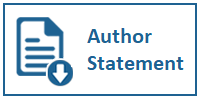PENGARUH FREE CASH FLOW, PERTUMBUHAN PERUSAHAAN, RETURN ON ASSETS, CASH RATIO, DEBT TO EQUITY RATIO DAN FIRM SIZE TERHADAP KEBIJAKAN DIVIDEN (Studi Empiris pada Perusahaan Sektor Industri Barang Konsumsi yang Terdaftar di Bursa Efek Indonesia Periode 2015
DOI:
https://doi.org/10.31937/akuntansi.v12i1.1570Abstract
Abstract- The company's decision on the distribution of dividend, as one of the returns expected by investors aside of capital gain, is an important decision due to its impacts on company's value and shareholders' wealth. The purpose of this research is to obtain empirical evidence regarding the determinants on Dividend Payout Ratio, namely Free Cash Flow, Company's Growth, Return on Assets, Cash Ratio, Debt to Equity Ratio, and Firm Size (Empirical Study on Consumption Goods Industry Companies Listed on Indonesia Stock Exchange between 2015-2017). The samples in this study were selected through purposive sampling method and secondary data were analyzed through multiple linear regression methods. In total, 13 companies were used as samples. The result of this study showed Free Cash Flow, Cash Ratio and Firm Size partially have significant and positive effect towards Dividend Payout Ratio, and Company's Growth has significant and negative effect towards Dividend Payout Ratio. While Return on Assets and Debt to Equity Ratio has no significant effects toward Dividend Payout Ratio. Free Cash Flow, Company's Growth, Return on Assets, Cash Ratio, Debt to Equity Ratio and Firm Size simultaneously have significant effect toward Dividend Payout Ratio (DPR).
Keywords: Cash Ratio, Debt to Equity Ratio, Dividend Payout Ratio, Firm Size, Free Cash Flow, Growth, Return on Assets
Downloads
Downloads
Published
How to Cite
Issue
Section
License
Authors retain copyright and grant the journal right of first publication with the work simultaneously licensed under a Creative Commons Attribution-ShareAlike International License (CC-BY-SA 4.0) that allows others to share the work with an acknowledgement of the work's authorship and initial publication in this journal.
Authors are able to enter into separate, additional contractual arrangements for the non-exclusive distribution of the journal's published version of the work (e.g., post it to an institutional repository or publish it in a book), with an acknowledgement of its initial publication in this journal.
















